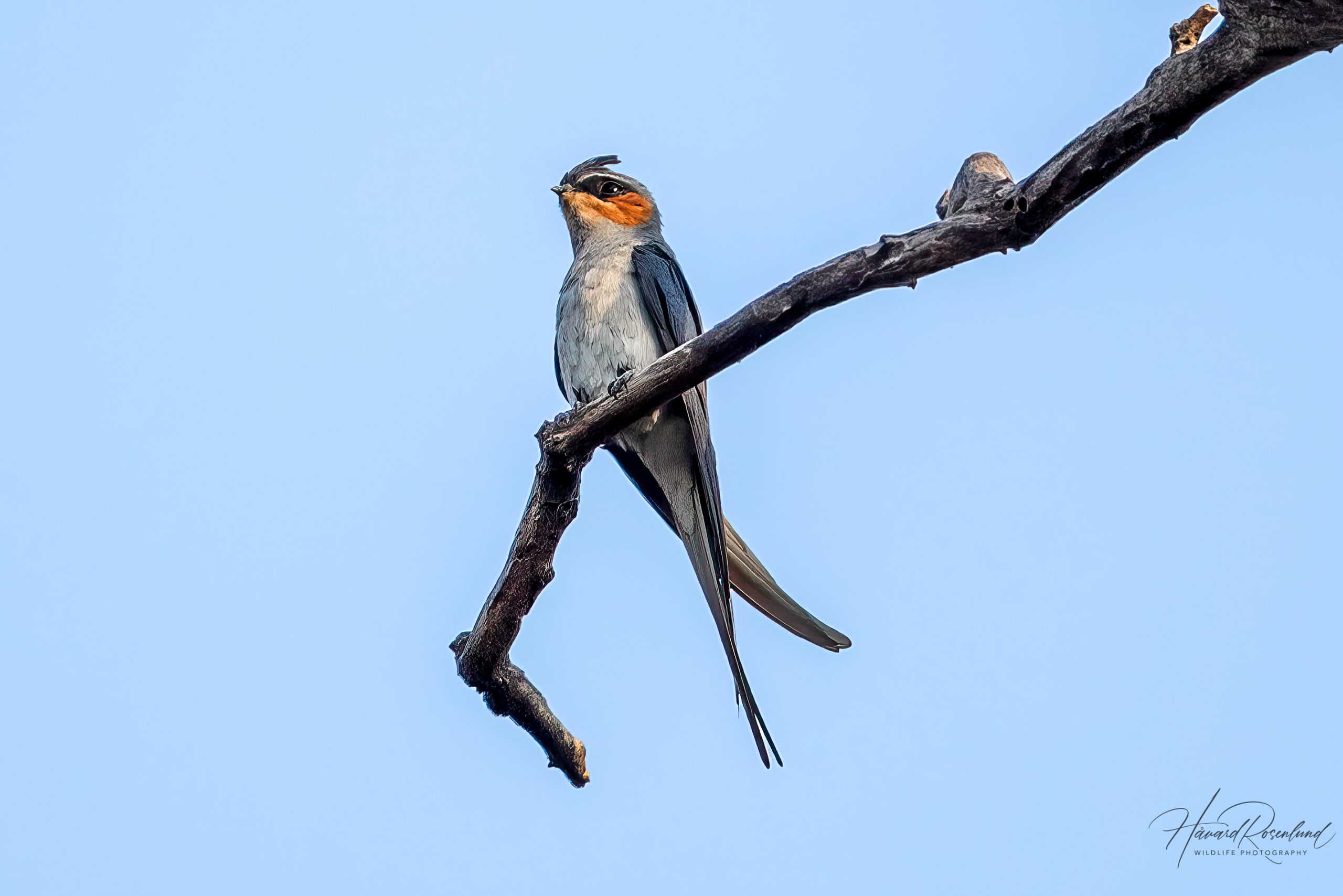Description
The crested treeswift (Hemiprocne coronata) is a species of bird belonging to the family Hemiprocnidae, which contains four species of treeswifts. This species is found across South and Southeast Asia, including countries like India, Sri Lanka, and parts of Southeast Asia. The crested treeswift is noted for its graceful flight and distinctive appearance. It typically measures around 23-25 cm (9-10 in) in length, with a wingspan of about 55-60 cm (21.5-23.5 in). The bird is characterized by its long, forked tail and a prominent crest on its head, which gives it a unique silhouette. The plumage is predominantly bluish-grey, with a lighter underbelly and a subtle metallic sheen. Males have a rufous chin and throat, whereas females have a white moustachial stripe. This species differs from other treeswifts by its coloration, long tail, as well as its distinctive facial markings.
Diet & habitat
Crested treeswifts are commonly found in open woodlands, forest edges, and savannas. They are highly adapted to an aerial lifestyle, often seen gliding gracefully above the canopy. Their diet mainly consists of flying insects, which they catch in mid-air using their wide, gaping mouths. Crested treeswifts are adept at agile flight maneuvers, allowing them to snatch insects with precision. They are often observed flying high in the sky or perching on exposed branches, from where they launch their hunting sorties.
Behavior
Crested treeswifts are known for their agile and acrobatic flight, and appear very similar to swifts, which are close relatives to treeswifts. Crested treeswifts are often seen in small groups of six to twelve individuals. These birds are most active during the cooler parts of the day, particularly early morning and late afternoon. They are not known to be particularly vocal, but they do have a series of soft, twittering calls. The species exhibits a unique roosting behavior where individuals may cling vertically to tree trunks, much like woodpeckers, using their strong claws and tail feathers for support.
Nesting
The breeding season of the crested treeswift varies depending on the region but generally occurs during the warmer months. These birds are known for their unique nesting behavior; they construct tiny, shallow nests using saliva and plant material, typically on the upper side of a tree branch. The female lays a single egg, which both parents take turns incubating. The incubation period lasts around 21-24 days, after which the chick hatches. The young fledge after about 40 days, with the young bird remaining dependent on the parents for a period thereafter.
Status
The crested treeswift is currently listed as a species of least concern on the IUCN Red List. This classification is due to its wide range and relatively stable population. However, habitat loss due to deforestation and urbanization poses a potential threat to local populations. Conservation efforts in various regions focus on preserving natural habitats to ensure the continued survival of this graceful species.





